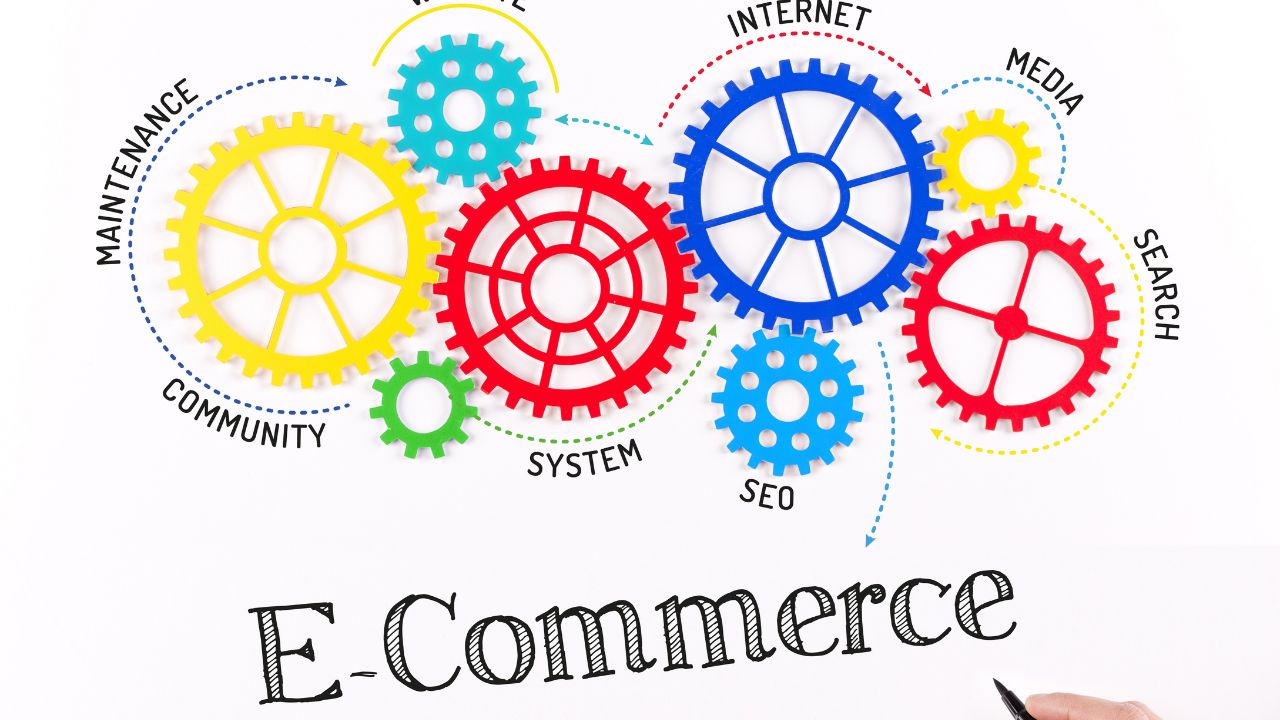Have you ever walked into a store and felt instantly drawn to a display? Maybe the colors were perfect, the products were arranged just right, or a helpful sign guided you to exactly what you needed. Excellent merchandising is what led to that experience. How can that magic be transferred to a digital environment, then? This is where we explore the question: What is merchandising in ecommerce?
Listing products on a website is only one aspect of it. Presenting your items in a way that attracts clients and encourages them to buy is both an art and a science. The way things are arranged in your online store can determine whether a customer browses or makes a purchase, just like in a physical store.
From the moment a customer lands on your website until they click the “buy” button, effective ecommerce merchandising directs their path. It includes the design of your homepage as well as the product pages and search results. We’ll explain what internet merchandising is in detail in this guide, along with helpful advice on how to increase sales.
What Merchandising in Ecommerce Actually Means
Ecommerce merchandising, at its core, is the deliberate placement and display of goods on your online shop. The objective is to give online shoppers an engaging, simple, and seamless shopping experience. Showing the right product to the right person at the right time is the key.
Imagine how a beautifully designed boutique window differs from a messy, chaotic shelf in a physical store. Visual merchandising is used in the boutique display to evoke desire and tell a tale. Online merchandising uses digital technologies and tactics to accomplish the same goal. In order to improve sales, conversion rates, and client loyalty, online businesses use this strategy to make the most of their digital space.
This procedure requires a thorough comprehension of your consumers’ expectations and behavior. To make your ecommerce stores stand out, use this dynamic method that combines data research with creativity.
Why Effective Ecommerce Merchandising Matters
Investing time and effort into your merchandising strategy isn’t just a “nice-to-have” option; it’s essential for survival and growth. A strong merchandising plan directly impacts your bottom line.
Here’s why it’s so crucial:
- Improved Customer Experience: A well-merchandised site is user-friendly. It helps customers find what they’re looking for quickly and easily, reducing frustration and bounce rates.
- Increased Conversion Rates: By guiding customers to a relevant product and making the path to purchase clear, you remove friction from the buying process. This naturally leads to more completed sales.
- Higher Average Order Value (AOV): Strategies like cross-selling and upselling, which are key components of merchandising, encourage customers to add more items to their cart.
- Enhanced Brand Perception: A professional, visually appealing online store builds trust and positions your brand as a leader in its field. It shows you care about the customer experience.
- Better Search and Navigation: A logical site structure and an optimized search bar help shoppers discover products they didn’t even know they were looking for, leading to more sales opportunities.
Core Pillars of Ecommerce Merchandising
To build a winning strategy, you need to focus on several key areas. These pillars work together to create a cohesive and effective ecommerce merchandising experience that turns visitors into loyal customers.
1. Strategic Site Navigation and Structure
Your site’s navigation is the roadmap for your customers. If it’s confusing, they’ll get lost and leave.
- Create Logical Categories: Group your products into intuitive categories and subcategories. Think like your customer. If you sell clothing, categories might be “Tops,” “Bottoms,” and “Dresses,” with subcategories like “T-Shirts” and “Blouses” under “Tops.”
- Optimize Your Search Bar: The search function is a powerful tool. Ensure it provides fast, accurate, and relevant results. Features like autocomplete and filters for size, color, or price can dramatically improve the experience. Make sure that even with a typo, your search can guide users to the right place.
2. Compelling Visual Merchandising
Humans are visual creatures. What your customers see has a huge impact on their decision to buy. This is where visual merchandising comes into play.
- High-Quality Imagery and Videos: Use professional, high-resolution photos from multiple angles. Show your products in use. Product videos can increase understanding and boost conversion rates significantly.
- Consistent Branding: Your visual elements, from fonts and colors to image style, should be consistent across all pages. This creates a polished and trustworthy brand identity.
- Engaging Landing Pages: Your homepage and key landing pages are your digital storefront windows. Use them to showcase bestsellers, new arrivals, and current promotions with eye-catching banners and graphics.
3. Smart Product Recommendations and Personalization
One of the biggest advantages of ecommerce over physical stores is the ability to personalize the experience for every single visitor. What your customers expect today is an experience tailored to them.
- Personalized Product Recommendations: Use data to suggest products to customers based on their browsing history, past purchases, and what similar shoppers have viewed. Phrases like “You might also like” or “Frequently bought together” are merchandising classics for a reason.
- Segmentation: Group your audience based on behavior, location, or demographics. You can then show different homepage banners or promotions to new visitors versus returning customers, creating a more relevant product discovery experience.
Quick Answer: What is the difference between ecommerce merchandising and marketing?
Ecommerce merchandising focuses on the in-store experience: how products are displayed, organized, and presented on your website to drive sales. Marketing focuses on driving traffic to the store through channels like email, ads, and social media. Merchandising converts the traffic that marketing brings.
Actionable Merchandising Tips to Sell More
Now that we understand what is merchandising in ecommerce, let’s dive into some practical tips you can implement today to improve your online store and boost sales.
1. Optimize Your Category Pages
Category pages are often the first place a customer lands after the homepage. Don’t treat them like a simple product grid.
- Use Banners: Add a banner at the top of the page to highlight a specific subcategory or promotion.
- Enable Advanced Filtering: Allow users to filter by attributes like size, color, brand, price, and customer ratings. The more control they have, the faster they can find what they want.
- Curate Product Order: Don’t just list products alphabetically. Feature your bestsellers, new arrivals, or highest-margin items at the top to grab attention immediately.
2. Perfect Your Product Pages
The product page is your final sales pitch. It needs to be convincing, informative, and compelling.
- Write Compelling Descriptions: Go beyond technical specs. Tell a story about the product. Explain its benefits and how it solves a problem for the customer.
- Leverage Social Proof: Display customer reviews, ratings, and user-generated content (like photos of customers using the product). This builds trust and validates the purchase decision.
- Implement Cross-Sells and Upsells: On the product page, suggest complementary items (cross-selling) or a more premium version of the product (upselling). For example, if someone is buying a camera, suggest a memory card and a camera bag.
3. Create Urgency and Scarcity
Encourage immediate action by using proven psychological triggers.
- Limited-Time Offers: Use countdown timers for sales or special promotions to create a sense of urgency.
- Low Stock Alerts: Displaying messages like “Only 3 left in stock!” can motivate hesitant buyers to commit before the item is gone.
- Exclusive Bundles: Offer product bundles for a limited time. This not only creates urgency but can also increase the average order value.
4. Tell a Story with Your Collections
Instead of just presenting products, group them into thematic collections that tell a story. This approach helps customers envision how products fit into their lives.
- “Shop the Look”: If you sell apparel or home decor, create pages where customers can buy an entire curated outfit or room setup.
- Gift Guides: During holidays or special occasions, create gift guides for different personas (e.g., “Gifts for Dad,” “Gifts for the Fitness Enthusiast”).
- Solution-Based Collections: Group products that solve a specific problem, such as “Work From Home Essentials” or “Skincare for Dry Skin.” This makes the shopping experience more helpful and guided.
The Future of Ecommerce Merchandising
The world of online retailers is constantly evolving. Technologies like artificial intelligence (AI) and augmented reality (AR) are pushing the boundaries of what’s possible. AI-powered tools are becoming more sophisticated at delivering hyper-personalized product recommendations, while AR allows customers to virtually “try on” clothes or see how furniture would look in their room.
Staying competitive means paying attention to these trends and continually testing and optimizing your merchandising strategies. The core principles will remain the same: understand your customer, make their customer journey seamless, and present your products in the most compelling way possible.
By focusing on creating a thoughtful, user-friendly, and visually engaging shopping experience, you can transform your ecommerce site from a simple catalog into a powerful sales engine.
Ready to take your online store to the next level? A strong merchandising strategy is just one piece of the puzzle. To truly maximize your growth, you need a holistic marketing plan that drives targeted traffic and builds a loyal customer base. Discover how to create that plan with a free consultation from Marketing Immersion.






